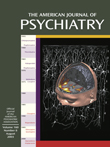Peripubertal Suicide Attempts in Offspring of Suicide Attempters With Siblings Concordant for Suicidal Behavior
Abstract
OBJECTIVE: The authors sought to determine 1) whether the risk for familial transmission of suicidal behavior is greater with increased family loading for suicide attempts, and 2) whether the transmission of suicidal behavior is mediated by impulsive aggression. METHOD: A reanalysis of a high-risk study compared the offspring of three mood disorder proband groups: suicide attempters with a sibling who also attempted suicide (N=19), suicide attempters whose siblings never made a suicide attempt (N=73), and nonsuicidal probands whose siblings also never engaged in suicidal behavior (N=73). Probands and offspring were assessed with respect to psychopathology, suicide attempt history, impulsive aggression, and exposure to familial adversity. RESULTS: Offspring of suicide attempters with siblings concordant for suicidal behavior showed a higher risk of suicide attempt than did offspring of nonsuicidal probands and had an earlier age at onset of suicidal behavior than offspring of suicide attempters with siblings discordant for suicidal behavior. Probands from sibling pairs concordant for suicidal behavior and their offspring reported greater lifetime impulsive aggression compared with each of the other two proband/offspring groups. In the offspring, impulsive aggression was the most powerful predictor of early age at first suicide attempt. CONCLUSIONS: Familial loading for suicide attempts may affect rates of transmission as well as age at onset of suicidal behavior, and its effect may be mediated by the familial transmission of impulsive aggression.



